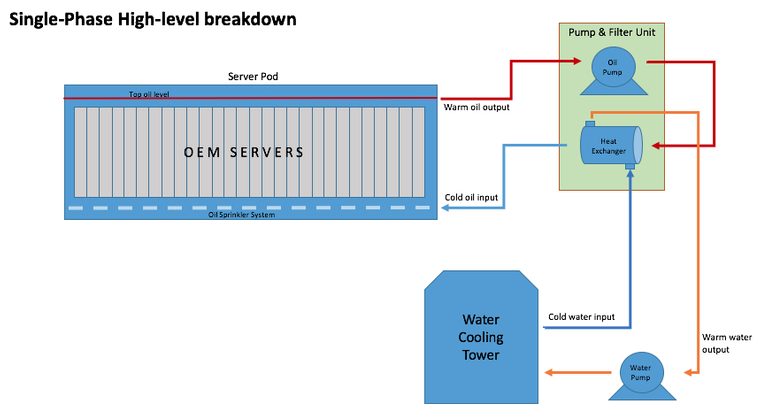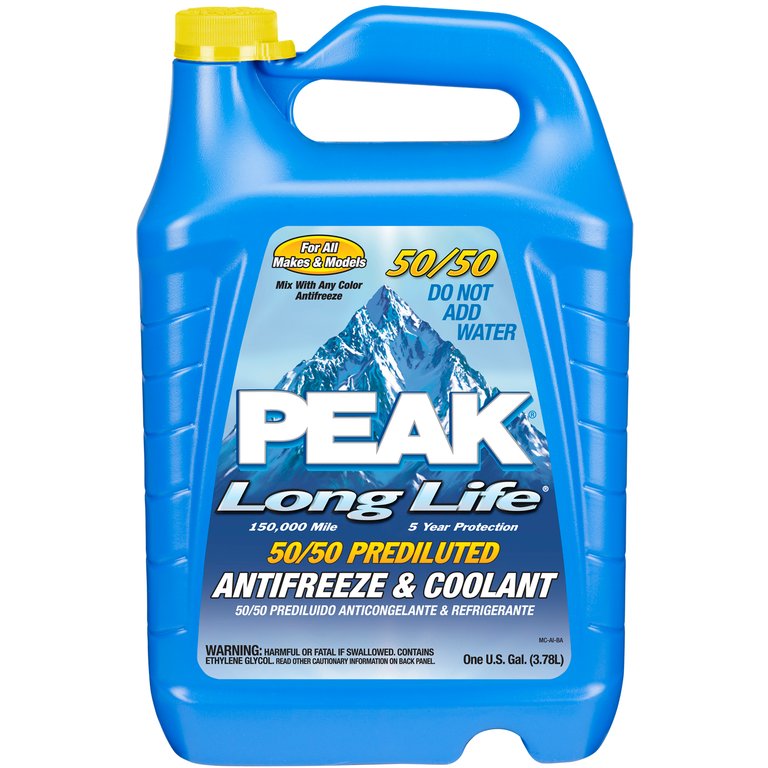Findings have shown that a 4 cylinder vehicle moving along a highway at around 60 miles per hour, will produce about 4100 controlled combustion per minute in the engine as the spark plugs ignites the fuel in each cylinder to propel the car. Obviously, these combustion produce a substantial amount of heat and, if not controlled, will wreck an engine in a count of minutes. Controlling these excessive temperatures is the job of the cooling system.
The modern-day cooling system has not changed an awful lot from the cooling system models in the '20s. Oh sure, it has come to be infinitely extra dependable and environment friendly at doing it is job, however the fundamental cooling system nonetheless still consists of liquid coolant being circulated in the engine, then out to the radiator to be cooled by the air coming through the front grill of the vehicle.
Today's cooling system ought to keep the engine at a steady temperature whether the outside air temperature is 100 Fahrenheit or -10. If the engine temperature is too low, gas economy will reduce and emissions will rise. But then, if is allowed to get too hot for long, the engine will self destruct.
How Does the Cooling System Work?
Actually, there are two kinds:
- Liquid cooled and Air cooled.
Air cooled engines are located on a few older cars, like the unique Volkswagen Beetle, the Chevrolet Corvair and a few others. Some new designs of motorcycles use air cooling, however for the most vehicles, the Liquid cooling system is used and that is what this article will focus on.

The cooling system is made up of the passages inside the engine block and heads, a water pump to pump in the coolant, a thermostat to control the temperature of the coolant, a radiator to cool the coolant, a radiator cap to control the pressure in the system, and some lines consisting of interconnecting hoses to transfer the coolant from the engine to the radiator and also to the car's heater: the place hot coolant is used to warm up the vehicle's interior on a very cold day.
A cooling system works by way of sending a liquid coolant through passages in the engine block and heads. As the coolant flows via these passages, it absorbs heat from the engine. The heated fluid then makes its way via a rubber hose to the radiator in the front of the car. As the fluid flows through the skinny tubes in the radiator, it is cooled via the air movement coming into the engine compartment from the grill in the front of the car. The fluid returns to the engine to absorb more heat after it has been cooled. The water pump does the job of keeping the fluid moving through the system.
A thermostat is positioned between the engine and the radiator to make sure that the coolant stays above a certain preset temperature. If the coolant temperature falls beneath this temperature, the thermostat blocks the coolant flow to the radiator, forcing the fluid through a pass by and immediately lowered back to the engine. The coolant will proceed to circulate like this until it reaches the preset temperature, at which point, the thermostat will open a valve and permit the coolant returned through the radiator.
In order to forestall the coolant from boiling, the cooling system is designed to be pressurized. Under pressure, the boiling point of the coolant is raised considerably. However, too much pressure will cause hoses and different components to burst, so the system is designed to relieve pressure if it exceeds a particular point. The job of retaining the pressure in the cooling device belongs to the radiator cap. The cap is designed to release some fluid if it reaches the targeted upper limit that the system is designed to handle. Prior to the '70s, the cap would release this more pressure to the pavement. Since then, a mechansm was once brought to capture any released fluid and keep it temporarily in a reserve tank. This fluid would then return to the cooling machine after the engine has cooled down. This is what is called a closed cooling system.
Circulation
The coolant follows a direction that takes it from the water pump, via passages inside the engine block: (the place it absorbs the heat produced by way of the cylinder movements). It then flows up to the cylinder head (or heads in a V kind engine): (the place it collects extra heat from the combustion chambers). Then flows out past the thermostat (if the thermostat is opened to permit the fluid to pass), through the top radiator hose and into the radiator. The coolant flows through the skinny flattened tubes that make up the core of the radiator and is cooled by using the air waft through the radiator. From there, it flows out of the radiator, through the decrease radiator hose and again to the water pump. By this time, the coolant is cooled off and geared up to absorb more heat from the engine.

The capability of the system is engineered for the kind and size of the engine and the work load that it is expected to undergo. Obviously, the cooling system for a larger, more powerful V8 engine in a heavy automobile will need considerably extra capacity than a compact car with a small 4 cylinder engine. On a massive vehicle, the radiator is large with many more tubes for the coolant to go with the flow. The radiator is also wider and taller to capture more air drift coming into the car from the grill in front.
Antifreeze and coolant
The coolant that flows through the engine ought to be in a position to stand up to temperatures well below zero without freezing. It should also be able to cope with engine temperatures in extra of 250 degrees except boiling. The fluid must also include rust inhibitors and a lubricant.
The coolant in modern day automobiles is a combination of ethylene glycol (antifreeze) and water. The encouraged ratio is fifty-fifty. In other words, one part antifreeze and one phase water. two This is the minimal recommended for use in vehicle engines. Less antifreeze and the boiling point would be too low. In certain regions where the temperatures can go beneath zero, it is advisable to have as low as 75% antifreeze and 25% water, however no extra than that. Pure antifreeze will now not work right and can cause a boil over.

Antifreeze is very poisonous and must be kept away from people and animals, especially dogs and cats, who are attracted due to the candy taste. Ethylene Glycol, if ingested, will shape calcium crystals in the kidneys which can cause acute renal failure and death.
References:
https://en.wikipedia.org/wiki/Coolant
http://www.burkettoil.com/understanding-coolant
credit: https://www.linkedin.com/pulse/short-article-engine-cooling-systems-vijay-tharad/
All images used are copyright free
Source
There is reasonable evidence that this article has been spun, rewritten, or reworded. Repeatedly posting such content is considered spam.
Spam is discouraged by the community, and may result in action from the cheetah bot.
More information and tips on sharing content.
If you believe this comment is in error, please contact us in #disputes on Discord
1 horsepower is about 750 watts (W) or 0.75 kW.
A 100 hp engine therefore produces 75 kW of power that goes to the wheels.
Internal combustion engines are only 20% efficient so this means we have to divide that 750 kW by 0.2 giving 375 kW of total power -> 75 kW to the wheels and 300 kW is waste heat.
300 kW is 0.3 MW (megawatts). That is a lot of heat and that is only for a small engine.
If it is a 200 hp engine then 0.6 MW of heat needs to be dumped out and if it is a 333 hp engine then a full megawatt of heat needs to be dumped out into the air.
That is a lot of work for a cooling system.
Definitely alot of work! Reason the cooling system has to be built to precision. Manufacturing automobile engines will be a failure without a reliable cooling system.
Thanks for the analysis!
I was shocked to know that a car would break down in minutes without it's cooling system. This means to me that the cooling system is indeed a vital component in the automobile system. The most interesting design of this system in my opinion, is the radiator. The fins available have be shown to increase the heat transfer exponentially if optimally designed, under the right conditions. For example if gases are used for cooling, the fins will not be necessary as it would not cause a significant loss of heat. On the other hand if the effectiveness of the fin does not justify the cost, it is therefore by design principles not worth it.
Fins basically increase the surface area. Hence heat loss according to this formula;
Q = hA(Ts-T∞)
Yes! The radiator is a major part of the cooling system. Its design to continue the cooling cycle was a break through.
I will be featuring it in my weekly #technology and #science curation post for the @minnowsupport project and the Creators' Guild! The @creatorsguild is a new group of Steem bloggers and content creators looking to improve the overall quality of their niche.
Wish not to be featured in the curation post this Friday? Please let me know. In the meantime, keep up the hard work, and I hope to see you at the Creators' Guild!
If you have a free witness vote and like what I am doing for the Steem blockchain it would be an honor to have your vote for my witness server. Either click this SteemConnect link or head over to steemit.com/~witnesses and enter my username it the box at the bottom.
Alright pal. You just got a follow and a witness upvote.
Curators guild! I would love to know more about that..
Cooing systems still remains the heart of automobiles to me.... You just can't afford over heating
Nicely and well detailed explanation... I would hold my crazy comment to avoid long term arguments but I can still say in the olden days automobile survived with the air cooled cooling system not the radiator technology that is available now..... I stand to be corrected
But the fact still remain the system need to be cool to be in good condition #winks
The radiator technology as you referred to it still very much make use of the air cooling technology, just in a slightly different way. The antifreeze is cooled by air after absorbing heat from the engine.
It was discovered that using an antifreeze resulted in more heat absorption and was more effective in higher torque engines where the heat generated is enormous.
I like the quality of your article, you really did justice to this.
The cooling system is indeed a vital part of the Automobile engine. A typical peak combustion temperature could reach about 3000 oC. Imagine such immense quantity of heat building up without any restraints.
However, I observed that your images are not well linked to their sources. Also, the image under the subheadings "circulation" is not very related albeit it shows a cooling system. You could create a schematic yourself to illustrate to us better.
Best regards!
Thanks! Of course .. allowing that knind of heat built up without constrains can be catastrophic.
I think you should try clicking on the sources! I think i pretty linked them well.
Very informative, thanks
You're welcome
You have been upvoted by the @sndbox-alpha! Our curation team is currently formed by @jeffbernst, @bitrocker2020, @jrswab & @teachblogger . We are seeking posts of the highest quality and we deem your endeavour as one of them. If you want to get to know more, feel free to check our blog.